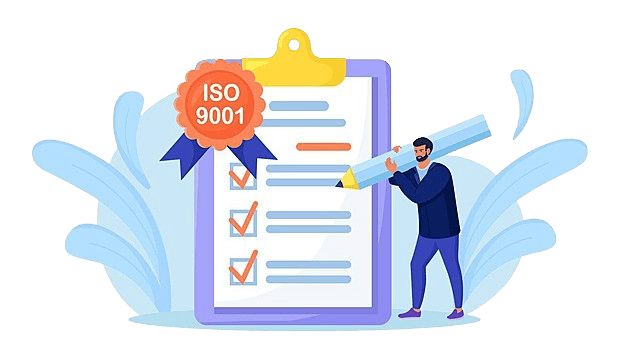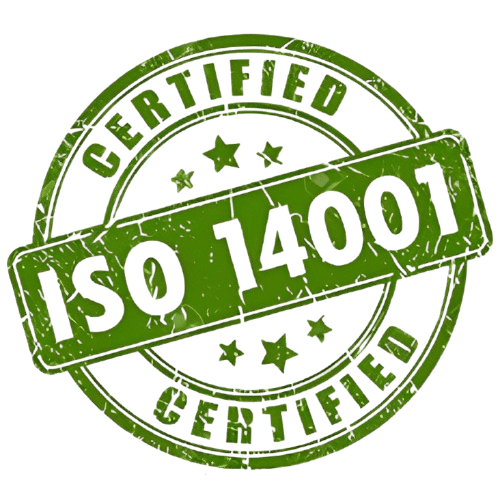ISO 14001 Certification: Step-by-Step Guide for Beginners
In today’s world, environmental responsibility is no longer a luxury—it’s a necessity. As industries grow, so does their environmental footprint. This is where ISO 14001 plays a critical role. Whether you are an EHS consultant, a business owner, or a compliance officer, understanding ISO 14001 can lead your organization toward sustainability, improved reputation, and legal compliance. In this guide, we’ll walk you through everything you need to know about ISO 14001, explained simply and practically, even if you’re just starting out.
Learn More
6/11/20254 min read


ISO 14001 Certification: Step-by-Step Guide for Beginners
In today’s world, environmental responsibility is no longer a luxury—it’s a necessity. As industries grow, so does their environmental footprint. This is where ISO 14001 plays a critical role. Whether you are an EHS consultant, a business owner, or a compliance officer, understanding ISO 14001 can lead your organization toward sustainability, improved reputation, and legal compliance.
In this guide, we’ll walk you through everything you need to know about ISO 14001, explained simply and practically, even if you’re just starting out.
What is ISO 14001?
ISO 14001 is an international standard for Environmental Management Systems (EMS). It provides a structured framework that helps organizations reduce their environmental impact, comply with legal requirements, and continually improve performance.
Objectives of ISO 14001:
Minimize harmful effects on the environment
Comply with applicable laws and environmental regulations
Drive continuous improvement in environmental performance
Who Needs ISO 14001?
ISO 14001 is suitable for organizations of any size and industry, including:
Manufacturing units
Hospitals and healthcare facilities
Educational institutions
Construction companies
Government and public sector organizations
Benefits of ISO 14001 Certification:
Reduction in waste, energy, and raw material consumption
Lower operational and legal compliance costs
Improved corporate image and stakeholder trust
Easier market access, especially in international trade
Enhanced employee engagement and awareness
Step-by-Step Guide to ISO 14001 Certification
Let’s break down the certification process into 8 easy-to-follow steps.
Step 1: Understand the Standard
Begin by familiarizing yourself with the ISO 14001:2015 standard—the most current version. Learn about its core components, including:
Environmental policy
Planning (aspects, impacts, risks, legal compliance)
Operational control
Monitoring and measurement
Internal audits and management reviews
Continuous improvement
📝 Tip: You can purchase the official standard from ISO.org or your country’s national standards body.
Step 2: Get Top Management Support
A successful EMS implementation starts with strong leadership. Your senior management should:
Approve and champion the decision to pursue ISO 14001
Allocate adequate resources (time, people, budget)
Set clear environmental goals aligned with business strategy
Communicate their commitment across all departments
Without top-level support, your environmental goals may not gain the necessary traction.
Step 3: Conduct a Gap Analysis
Next, perform a gap analysis to evaluate how your current environmental practices compare to ISO 14001 requirements. This step helps identify areas needing improvement.
Areas to evaluate:
Existing environmental policies and objectives
Waste, energy, and water management practices
Compliance with applicable environmental regulations
Employee awareness and training levels
Existing documentation and control systems
Tools like checklists, interviews, and process mapping can help complete this analysis efficiently.
Step 4: Plan Your Environmental Management System (EMS)
Based on your gap analysis, design or update your Environmental Management System. This includes:
Drafting a clear Environmental Policy
Identifying and evaluating environmental aspects and impacts
Defining legal and compliance obligations
Assessing risks and opportunities
Setting SMART environmental objectives (Specific, Measurable, Achievable, Relevant, Time-bound)
📝 Example: “Reduce hazardous waste generation by 15% within the next fiscal year.”
Step 5: Implement the EMS
Now, put your plan into action. Implementation includes:
Creating and updating procedures (e.g., for spill response, waste disposal)
Assigning roles and responsibilities
Training employees at all levels
Establishing a document control system
Ensuring operational controls are in place
📌 Important: Involve all departments—from maintenance to administration—to build a shared culture of environmental responsibility.
Step 6: Monitor and Measure Performance
Monitoring and evaluation are essential to ensure that your EMS is effective and that you are meeting your environmental goals.
Set up systems to:
Track KPIs (Key Performance Indicators)
Record environmental data (e.g., energy usage, emissions, waste)
Check legal and compliance status
Log incidents or near-misses
Conduct internal audits
📊 Examples of useful KPIs:
Electricity usage per unit produced
CO₂ emissions per month
Percentage of waste recycled
Step 7: Conduct Internal Audit & Management Review
Before going for external certification, conduct an internal audit to check the readiness and effectiveness of your EMS.
An internal audit will help you:
Identify non-conformities
Highlight strengths and weaknesses
Recommend corrective actions
After the audit, conduct a Management Review Meeting to:
Evaluate environmental performance
Review audit findings and compliance status
Discuss and revise policies or objectives as needed
📌 Ensure all reviews and findings are well documented for audit purposes.
Step 8: Apply for Certification Audit
Once your EMS is fully implemented and reviewed internally, you can apply for ISO 14001 certification through an accredited Certification Body (CB).


The certification process includes:
Stage 1 Audit (Document Review):
The auditor reviews your EMS documentation, policies, and records.
Stage 2 Audit (On-Site Assessment):
The auditor visits your site, interviews staff, and checks how your EMS functions in practice.
If successful, your organization will receive an ISO 14001 certificate, typically valid for three years, subject to annual surveillance audits.
📌 Choose an accredited and reputed certification body to ensure credibility and global acceptance.
How Long Does ISO 14001 Certification Take?
The time required depends on the size, complexity, and current readiness of your organization.
Estimated timelines:
Small business (1 site): 3 to 6 months
Medium business (multiple departments): 6 to 9 months
Large business (multi-site, high complexity): 9 to 18 months
How Much Does ISO 14001 Certification Cost?
Costs vary based on multiple factors including:
Size and type of organization
Number of employees and locations
Choice of Certification Body
Consultant fees (if hired)
💰 Typical range: ₹1.5 to ₹10 lakhs in India or $2,000 to $15,000 globally.
What Happens After Certification?
ISO 14001 is based on continual improvement. Certification is not the end—it's the beginning of a journey.
Post-certification best practices:
Conduct regular internal audits
Track KPIs and update goals annually
Maintain awareness training for new employees
Adapt policies and procedures as needed
Stay updated on environmental laws
You will also undergo annual surveillance audits to ensure ongoing compliance.
Common Challenges & Solutions
Challenge
Solution
Lack of environmental awareness
Conduct regular training and awareness campaigns
Too much paperwork/documentation
Use digital EMS tools and templates
Resistance to change
Involve employees in planning and decision-making
Confusion with legal requirements
Assign a compliance officer or hire an EHS consultant
Final Thoughts
ISO 14001 certification is much more than a formal document—it's a strategic tool that empowers organizations to reduce their environmental impact, comply with legal requirements, and build a reputation for sustainability.
If you're new to the process, this step-by-step guide should provide the clarity you need to get started. For EHS consultants, helping clients achieve ISO 14001 certification is a rewarding service that combines technical knowledge with meaningful impact.
Need Help Getting Started?
If you're planning to get ISO 14001 certified and need expert support—be it for a gap analysis, documentation, internal audits, or training—we're here to help.
👉 Contact us for a free consultation or implementation package details!


Our Address
5A/3, Ratan Nagar, Teen Dukan, Dehar Ka Balaji, Jaipur, 302039, Rajasthan
greendashindia@gmail.com
+91-8003097697
About Us
Greendash provides consultancy in environment, health, safety, and fire protection, ensuring compliance and sustainability across various industries in India.
Useful Links
Contact...
